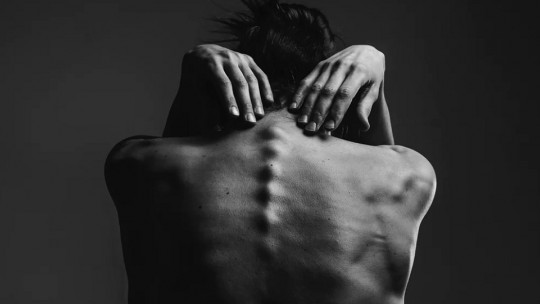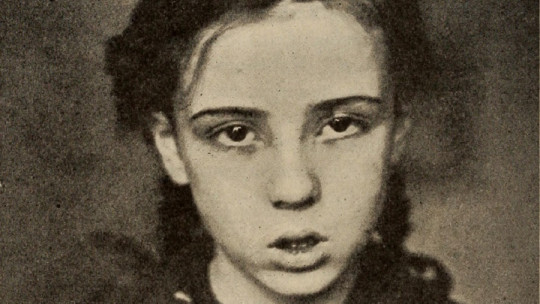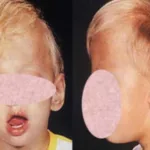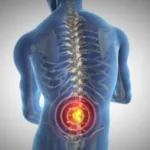
The human psyche is truly complex, its regulatory functioning being an essential element in order to be able to develop and adapt to the environment successfully. However, sometimes it is possible to find that for some reason some type of alteration occurs that makes said adaptation difficult, causing deep discomfort to the sufferer and greatly altering their life and/or those around them. This is what occurs in psychiatric disorders
There is a wide variety of these disorders, which greatly alter and make the lives of those who suffer from them difficult. However, some are more common than others. In this article we present fifteen of the most common.
What are the most common psychiatric disorders?
Below we reflect which are the 15 psychiatric disorders that can most frequently be found in clinical practice.
1. Major depression and other depressive disorders
Major depression is one of the most prevalent disorders in the world, being characterized by the presence of a sad mood and the presence of apathy and anhedonia along with other symptoms such as sleep disturbances, eating disorders, feelings of hopelessness, loss of ability to concentrate, mental and physical slowness, frustration and passivity. Suicidal ideation may occur.
In addition to major depression, dysthymia is also very common, in which depressive symptoms appear that are less severe than in major depression but continue over time (almost daily for at least two years).
2. Panic disorder with agoraphobia
The group of anxiety disorders is the most common type of disorder in the clinical population, although each of them separately may not be so frequent. One of the most common is panic disorder, in which anxiety attacks frequently occur in which tachycardia, sweating, respiratory acceleration, a feeling of loss of control of one’s behavior and fears such as that of dying or being to get mad. The idea of them happening again generates anticipatory anxiety favoring behavioral avoidance of situations in which it could appear.
In cases in which agoraphobia appears, anxiety occurs in situations in which the subject cannot escape or may not receive help if he suffers a crisis, such as in places with a large influx of people or very open places, so that tends to avoid them (which is very limiting).
3. Alcohol dependence
Alcoholism is a very common problem, due among other aspects to the relatively good view that society has of alcohol consumption. Dependence on this substance can lead to serious health problems such as liver problems, alcohol comas and can even lead to death for those who suffer from it.
4. Anorexia nervosa
It is one of the most prevalent disorders in today’s society, derived from the cult of the body and the high valuation of aesthetics and current beauty standards. Anorexia nervosa is characterized by a refusal to eat food, refusal or refusal to maintain a minimum body weight, distortion of one’s own body image and other symptoms such as amenorrhea or no period
It is common for them to make themselves vomit after eating, hide food, or exercise excessively to avoid gaining weight. It is one of the few psychiatric disorders that is capable of killing itself, due to the consequences of lack of nutrients.
5. Bulimia nervosa
Along with the previous one, it is one of the most common eating disorders. Bulimia nervosa is similar to anorexia in the fact that there is an obsessive fear of gaining weight and there is some distortion of body image, but it is characterized by the presence of massive binges in which one loses control.
Guilt and shame appear after them, and the individual who suffers from it begins to use compensatory methods to avoid gaining weight, such as making himself vomit.
6. Schizophrenia
Schizophrenia is undoubtedly the best-known psychotic disorder. It is characterized by the presence of hallucinations delusions, disorganized behavior and/or language, catatonia and/or negative symptoms such as alogia or poverty of thought for at least six months and these producing a significant alteration in one or more vital domains.
7. Attention Deficit Hyperactivity Disorder
ADHD is one of the most well-known and diagnosed neurodevelopmental disorders worldwide, to the point of being highly overdiagnosed. It is characterized by the presence of inattention symptoms such as distractibility, loss of objects, forgetting activities or inability to complete tasks, among others, together with hyperactivity symptoms such as motor restlessness, inability to take turns or interruption in other people’s activities.
Despite the above, it is possible that there is only attention deficit, in which case we would only be dealing with ADD.
- Related article: “Attention deficit or selective attention in ADHD”
8. Autism Spectrum Disorder
Another of the best-known neurodevelopmental disorders, autism is characterized by the presence of difficulties in communication and socialization, with difficulties managing, expressing and capturing emotions difficulties in the pragmatic use of language, lack of understanding and use of non-verbal language, isolation and lack of social reciprocity.
Restricted and repetitive patterns of behavior and interests also appear, coping poorly with changes and requiring stable routines. Sometimes hyper or hyposensitivity to sensory stimulation also appears.
It must be taken into account that the concept of autism covers a series of phenomena that may or may not be present in each person diagnosed with ASD. Besides, there are many degrees of autism which are expressed both through people with intellectual disabilities and unable to speak, to cases of individuals capable of speaking and with high intelligence.
9. Obsessive Compulsive Disorder
OCD is a disorder characterized by the continuous presence of persistent intrusive thoughts recognized as one’s own, which the subject himself considers irrational and which arouse high anxiety in the subject because he considers them inadmissible and which he will try to actively block, which causes a concentration. and overvaluation of these. This will end up generating its reappearance, generating obsession.
The patient usually uses a series of ritual acts that momentarily relieve anxiety but in the long term they facilitate its reappearance, called compulsions. A vicious circle is established between obsession and compulsion that will cause deep suffering in the subject and an increasingly higher level of anxiety, dedicating a large amount of time in their life to carrying out the compulsions and actively avoiding the obsession.
- Related article: “Obsessive-Compulsive Disorder (OCD): what is it and how does it manifest?”
10. Bipolar disorder
Along with depression, it is part of the mood disorders. This disorder is characterized by the presence of episodes of mania or hypomania that may or may not alternate with depressive episodes. The former are characterized by the presence of expansiveness, grandiosity, euphoria and disinhibition. They often become irritable and take more risks than usual, often taking actions they would not normally do.
There are two types of bipolarity, type 1, which corresponds to suffering from at least one manic or mixed episode, which may or may not alternate with one or more depressive episodes, and type 2, in which there has been at least one hypomanic episode followed. or preceded in time by at least one depressive episode. In this type of disorder, the mood can fluctuate rapidly, and can be very disabling. In fact, This is the type of disorder that poses the greatest risk of suicide above major depression.
- Related article: “Bipolar Disorder: 10 characteristics and curiosities that you didn’t know”
11. Dependence on other substances
Substance dependence is a very common and relevant disorder in today’s population. In this list we have previously separated alcohol dependence because it is one of the most prevalent, but dependence on cocaine and heroin is also common.
The fact that these disorders are very widespread cannot be understood without taking into account the influence of culture and political and economic dynamics.
12. Post-traumatic stress disorder
It is a disorder derived from the experience of a deep trauma in which the subject has seen his life or integrity threatened or has witnessed a situation that has caused him a heightened sense of vulnerability, helplessness or fear
After this experience, the subject manifests continuous re-experiencing, avoidance of stimuli associated with said situation and a high level of physiological hyperactivity for more than a month. It is typical in situations of gender violence, rape or in situations of war conflict.
13. Dependent personality disorder
It is one of the most common personality disorders, characterized by the excessive need to be taken care of. Relationships of submission and obedience are established with respect to the environment in order to be loved and not be abandoned. It usually occurs in people with low self-esteem and it is common for mood disorders to occur.
14. Borderline personality disorder
Borderline personality disorder is one of the most serious personality disorders, characterized by the presence of high emotional instability, the presence of impulsivity and a fluctuating mood with the presence of fear of abandonment, feelings of emptiness and alterations in self-consumption and personal relationships In many cases they self-harm and may engage in autolytic behavior.
15. Antisocial personality disorder
Antisocial personality disorder is characterized by the existence of a pattern of behavior in which disobedience to social norms, lack of respect for the rights and opinions of others, cruelty, irritability and low tolerance for frustration appear.








